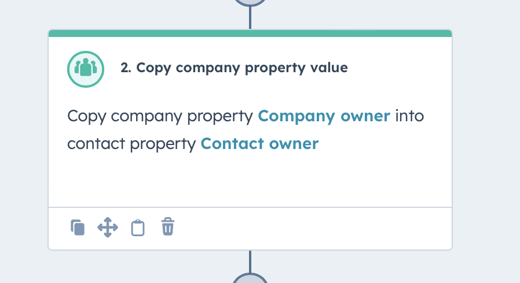It's hard to believe in 2024 that most organizations' sales and marketing teams still live in different worlds.
In some organizations, they're outright confrontational with each other. How is this still a thing?
Sales and marketing have the same goal: revenue. And in most organizations, EVERY deal that closes will have interactions with marketing AND sales.
Not collaborating is actively hurting each other's efforts. The good news is, it doesn't take a lot of effort to get sales and marketing on the same page. You don't have to be best friends, but you do have to be moving in the same direction.
A good way to start? Focus on targets and operations.
Get your sales leaders and marketing leaders in the same room and have the following conversations, which will help guide your efforts in a few specific ways that sales will love and will result in more pipeline.
Conversation One: Who is our ICP?
In order for marketing and sales to effectively align, it is crucial to clearly define the Ideal Customer Profile (ICP). This refers to the specific characteristics and attributes of the customers who are most likely to benefit from the company's products or services. By identifying the ICP, both teams can focus their efforts on targeting the right audience and generating qualified leads.
During this conversation, marketing and sales should discuss various factors that contribute to the ICP, such as demographics, psychographics, and firmographics. It is important to consider the needs, pain points, and preferences of the target audience to create effective marketing campaigns and sales strategies.
By aligning on the ICP, marketing can create targeted messaging and content that resonates with the ideal customers, while sales can prioritize their efforts on leads that have a higher likelihood of conversion. This alignment ensures that both teams are working towards the same goal and maximizing their resources.
Finding the right ICP isn't just about the biggest clients and targets. Consider other factors like the size of the total addressable market, the amount of hands-on support clients like them tend to require, are they working with a competitor you have a history of unseating, etc. "The Fortune 500" isn't the right answer to the ICP question.
Conversation Two: When should leads be handed over to Sales? (aka what is an MQL?)
Want to get on the same page as your sales team? Talk about your golden ticket: inbound leads. Getting these to the right rep at the right time with the right expectations is critical for both teams.
In most organizations this is called the Marketing Qualified Lead. In general, it means someone who has either raised their hand for a conversation with sales (by filling out a contact form, for example) or has otherwise met an engagement/scoring threshold.
Marketing MUST collaborate with sales on this. Marketing can make up all the definitions of MQLs they want - but if the MQLs aren't responsive to sales, then the definition of MQLs is wrong. True MQLs are the right combination of ICP and interest in your service.
For example, just because someone fills out a "contact us" form doesn't mean they're a good fit, or even worth spending your sales team's time to qualify it.
You cannot define MQLs alone. Get in the trenches with your sales leadership to take a stark look at the data (what leads are closing?) and the capabilities of your sales team and adjust accordingly. Then over time, work with your sales team to become more adept at talking to leads that know your brand but may not know they're ready to talk business.
This is possibly the most important decision a marketing team can make. If your sales team can't handle, or doesn't want non-hand-raiser leads, you're content absolutely must be designed to pull people down the funnel and, eventually, aggressively push for them to volunteer interest.
Conversation Three: WHO should get the leads?
Related to #2, WHO receives your leads is almost as important as the leads themselves. One of the main tenets of effective sales and marketing alignment is getting the right lead to the right person at the right time.
Ideally, MQLs don't all go to one place. Most sales teams are divided by geographic territories, product specialty, business size, etc. One of the best ways for marketing and sales to build trust, operationally, is by building a lead handoff motion that respects these boundaries.
Want to earn the trust of sales? Build a system that respects current ownership. One of my rules in lead handoff is never, under any circumstances, re-route a lead who already has an assigned sales rep.
You may have a team of business development reps, and one of their main jobs is to qualify inbound leads...but do you want them taking leads that are from high value targets (and are thus already mostly qualified?) You want to fast track those leads to your most senior reps and not bog them down in discovery.
Similarly, sales probably doesn't want to waste time with non-ICP leads, so work with them on a process to either insta-disqualify them or otherwise avoid spending valuable rep time on them.
Sales may not be the only recipients of inbound leads. Build assignment lanes for existing clients who MQL, who may need to go to an account management team. You're also likely to see support requests come through contact forms, so prepare to build assignment lanes for those.
Conversation Four: How should leads be handed over?
There are two parts to this conversation: how lead recipients are notified, and in what manner should they respond?
When an MQL is ready for follow-up, you have a few options:
- Send a notification via email
- Send a notification in-app
- Assign a task in-app
- Automate initial outreach
- Surface a rep's calendar for meeting self-selection
There's no right or wrong answer here. Just build it in the manner your sales team performs - with the only caveat being that sometimes an inbound lead needs to be a little disruptive, because you want outreach to happen ASAP. Like, instantly if possible.
And that's the second part of this conversation: how quickly should sales be expected to follow up? As excited as you'd think they'd be to receive a hot inbound lead, most sales team take several hours to reach out. By that time, a prospect may have already forgotten they filled out your form. If you want instant follow-up, it has to be agreed-upon by sales leasdership.
Among the options above, my preferences are the final two: Either automate the initial response (and make it appear as if it's coming from the rep) or just automatically surface the rep's calendar so the lead can take the next step themselves by selecting a time to meet. Once again, in either case, make sure sales is on board and aware, and ensure follow-up occurs even when the lead doesn't initially respond or schedule time.
Conversation Five: How do we measure and refine the success of the partnership?
Too often sales and marketing alignment on something like lead rotation is put in place but remains stagnant. Do both teams a favor and measure how things are going. Specifically, measure the following:
- Time to first response (by rep)
- MQL -> SQL rate
- MQL -> SQL rate for hand raisers vs nurture leads
- Percent of leads who turn unresponsive after conversion
- Discovery call meeting outcomes
There is no "set it and forget" action here. The MQL handoff motion should evolve. By measuring outcomes like the bullet points above, you can make decisions on what's working and what isn't, and in some cases, which reps aren't taking care of your MQLs.
You may find other downstream actions are beneficial. For example, if you have a high rate of no-shows to meetings, you can try an SMS reminder to the prospect earlier in the day. Or if no one is scheduling meetings, perhaps try keeping the discovery motion to email.
In HubSpot, a form is a form and there's no difference in a Contact Us form vs a Content form. It's a super critical distinction to make, so build your own field that distinguishes what type of request a lead is making. I prefer date stamps - when they fill out a contact form, Recent Contact Date is stamped; if they fill out a content form, Recent Content Date is stamped.
Besides knowing what type of form a person filled out, this also helps me measure other things like how many people requested content in a time period, if an MQL came from points or a hand raise, etc.
Partnership, Not Competition
If all the above conversations feel like marketing taking orders from sales on how things should be done, think through it again. This is about sales and marketing partnering to build revenue, not competing to see who can make the most noise.
First, creating demand and generating qualified leads is marketing's most important function in a B2B organization, so getting them to your sales team in the right manner is critical.
Second, marketing has an opportunity to bring the conversations mentioned above to the table and shape how they eventually function.
That means the processes above are precious and critical to the business, and there's no better area to focus on to foster connections between the two. If you get lead handoff right, it opens the doors to so much more sales/marketing alignment on things like lead scoring, outreach automation, live chat, and other things that marketing cannot do effectively without sales collaboration.
In larger organizations there may be a sales ops or marketing ops team that builds many of these functions. Which is fine - but sales and marketing leaders MUST be the ones defining the processes.
Dec 29, 2023 9:21:19 PM




